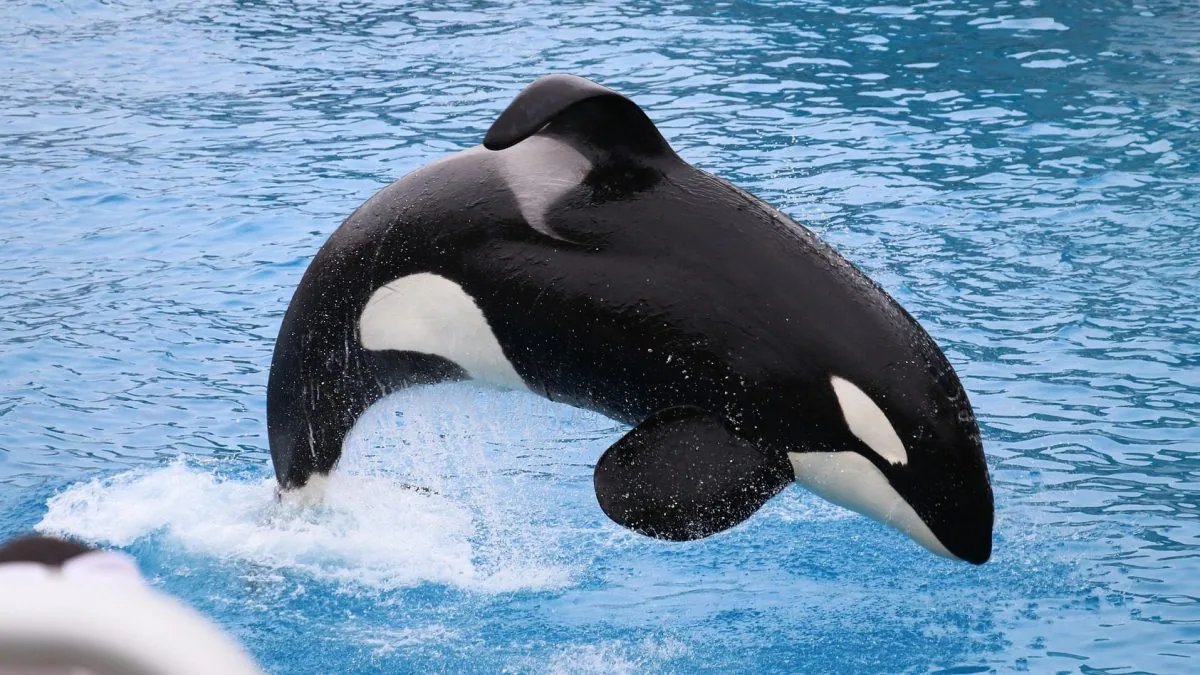Goodbye to the orca Kohana, who died in a tank at the age of 20: now she is finally free
The orca Kohana died "suddenly" at the Loro Parque in Tenerife. She was only 20 years old, all spent in a tub because of our greed.
Another orca appeared prematurely later park extending the endless list of cetaceans dead in captivity. The killer whale lost his life at just 20 years, park extendingg11 days As a place, who lived his entire - and very short - existence in the greedy hands of men. Was born at Sea World in San Diego (United States) in 2002, only to be transferred less than four years later to the Parrot park of Puerto de la Cruz on the island of Tenerife (Spain), after a long journey across the Atlantic Ocean.
The structure is both one zoo and a marine park and it has jumped to the honors of the international news several times, precisely because of the deaths of the killer whales; Kohana is the third to lose her life inside in just 19 months. The little one is also among the victims Ula is just 3 years old, the daughter of Morgananother orca imprisoned in Loro Parque.
Kohana's entire existence was filled with bereavement, suffering e deprivations as indeed is that of all marine mammals condemned to imprisonment, transformed into sad clowns e without dignity to perform in front of the paying audience. As indicated, the orca was born in San Diego's Sea World water park, a chain that ended up at the center of the dramatic documentary film "Black Fish".
She was the daughter of Takara also born in captivity, and of the famous Tilikumcaptured in 1983 in Iceland and transferred first to Canada and then to Sea World in Orlando, where he was involved in the death of three people. Tilikum died in 2017 after decades of torment, becoming the emblem of the devastating psychological trauma e physical that the killer whales undergo locked up in a tank.
Just think that the killer whales are big dolphins in nature they do not have ever once attacked a human being, while there are many deadly attacks on dolphins' children to the aggression accumulated during captivity. However, Tilikum has never seen either Takara or Kohana, since the latter was born through the artificial insemination of the mother.
Kohana was separated from Takara when she was just over 3 years old - artificially, bearing in mind that killer whales can live with their mother all their lives - to be transferred to Loro Parque along with three other killer whales, all related to each other in some way.
Among them, there was also uncle Keto with whose seed he got pregnant twice. Like Tilikum, Keto was also involved in the death of a trainer who was killed in December 2009. Kohana's first child, Adan, born in 2010, was immediately snatched from her by trainers to force him to live under the command of men; the same fate befell his daughter Victoria, born in 2012 and died in 2013 before turning one.
Kohana was first made pregnant when she was only 7 years old; this made her the earliest killer whale in captivity. Between one pregnancy and the other usually spend several years in nature, precisely because parental care is prolonged and childcare is demanding. But just 4 months after Adan's birth, Kohana was again impregnated with Keto semen by the Loro Parque staff.
Her son is still alive but suffers from dental problems "Extensive and chronic", as indicated by the Free Morgan Foundation, an organization committed to the release of Morgan, the last female orca left in the park of Tenerife. In 2019 she was the protagonist of a dramatic video in which she is seen trying desperately to reach her daughter Ula, who has been transferred to another tub.
Forests have decreased by 60% in the last 60 years, now we only have half a hectare per person
Loro Parque announced Kohana's disappearance in a press release, which underlined "deep sadness" for the sudden loss of the orca. In the same message, however, it was indicated that the killer whale suffered from health problems, therefore, it is not clear how and why she died.
A custom for cetaceans in captivity. What is certain is that killer whales occur in the wild they can live up to 90 years while those imprisoned in the dolphinarium barely exceed 20 years of life. OOf174 killer wwhales'death in captivity of which the history is known, only 18 have exceeded 20 years, as specified by the Free Morgan Foundation.
Kohana was yet another victim of a brutal system that annihilates the existence of these majestic cetaceans for mere merciless profit. Appeals to permanently close these activities multiply year after year and significant progress has been made after the publication of Blackfish; the hope is that we can reach liberation in marine sanctuaries protected of all marine mammals still held captive for public mockery, as was the case with the Little Gray and Little White belugas.
Source: Wikipedia



